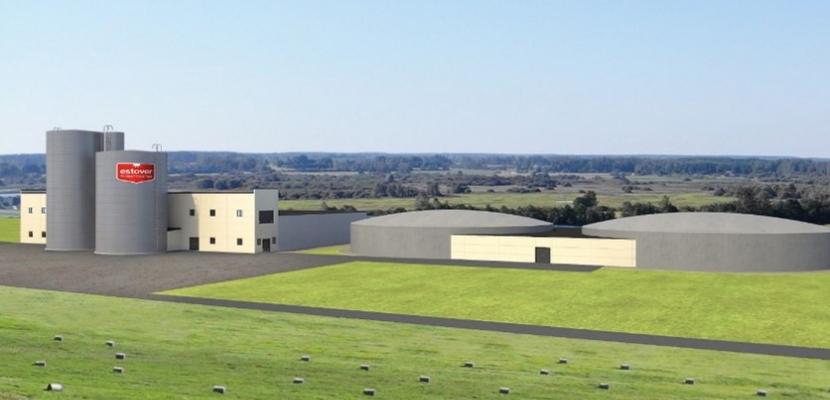Image

Biogas production through anaerobic fermentation of waste water and whey in dairy products factory
Published on 29 October 2020

Estonia
Eesti
This is the good practice's implementation level. It can be national, regional or local.
About this good practice
The company has been established in 1992 and has grown from a cheese wholesaler to one of the largest dairy product producers in Estonia. The company owns a wide product portfolio of dairy products, but has a more than 40% market share on the Estonian cheese market.
In dairy production, more specifically in cheese production whey and wastewater are generated as side outputs. The usage of this organic waste for biogas production enables to move the company to circular economy principles in their energy production, terminate the usage of shale oil and decrease sewage sludge pollution load. The biogas plant usage anaerobic fermentation of the organic waste for gas production. Investment comprised of a new biogas plant with required equipment and refurbishing of the wastewater system. Machinery and equipment included floatation system, tanks, anaerobic reactor, filters, flocculator, gas compressor and cleaner.
In dairy production, more specifically in cheese production whey and wastewater are generated as side outputs. The usage of this organic waste for biogas production enables to move the company to circular economy principles in their energy production, terminate the usage of shale oil and decrease sewage sludge pollution load. The biogas plant usage anaerobic fermentation of the organic waste for gas production. Investment comprised of a new biogas plant with required equipment and refurbishing of the wastewater system. Machinery and equipment included floatation system, tanks, anaerobic reactor, filters, flocculator, gas compressor and cleaner.
Expert opinion
Due to its technical nature, this good practice would normally not be included in this database for policy makers.
There is however a certain added value in the sense that it provides a concrete example for an energy efficiency / circular economy measure introduced at a local SME.
Indeed, dairy companies typically have a waste product that serve easily as energy source for a biogas plant, thus turning the problematic waste into a valuable resource.
As biogas plants require significant upfront investments which are made up by very low running costs over a long time, public co-financing in form of a partial grant as in the case of the Estonian Ministry of Environment’s measure “Resource efficiency of enterprises” is a good measure to unlock private investment.
Similar investment subsidies for resource efficiency measures in SMEs could be introduced at regional levels in other regions seeking to make their companies more productive and greener at the same time.
There is however a certain added value in the sense that it provides a concrete example for an energy efficiency / circular economy measure introduced at a local SME.
Indeed, dairy companies typically have a waste product that serve easily as energy source for a biogas plant, thus turning the problematic waste into a valuable resource.
As biogas plants require significant upfront investments which are made up by very low running costs over a long time, public co-financing in form of a partial grant as in the case of the Estonian Ministry of Environment’s measure “Resource efficiency of enterprises” is a good measure to unlock private investment.
Similar investment subsidies for resource efficiency measures in SMEs could be introduced at regional levels in other regions seeking to make their companies more productive and greener at the same time.
Works at
Interreg Europe Policy Learning Platform
Resources needed
6 M€ for total investment. Grant 1,96 M€ by Estonian Ministry of Environment’s measure “Resource efficiency of enterprises” from the Structural Funds of EU. Measure supports investments in resource-efficient solutions and resource audit of enterprise - prerequisite for investment aid.
Evidence of success
Gas produced will be used for steam production for the manufacturing process and replace 80% of shale oil usage that reduce CO2 emissions by 1900 tons annually.
Usage of this organic waste for biogas production enables to move the company to circular economy.
Biogas terminate the usage of shale oil and decrease sewage sludge pollution load.
Usage of this organic waste for biogas production enables to move the company to circular economy.
Biogas terminate the usage of shale oil and decrease sewage sludge pollution load.
Potential for learning or transfer
Potential transfer to other dairy production facilities.
Further information
Website
Good practice owner
You can contact the good practice owner below for more detailed information.
Organisation
other

Estonia
Eesti
Contact
Energy expert
